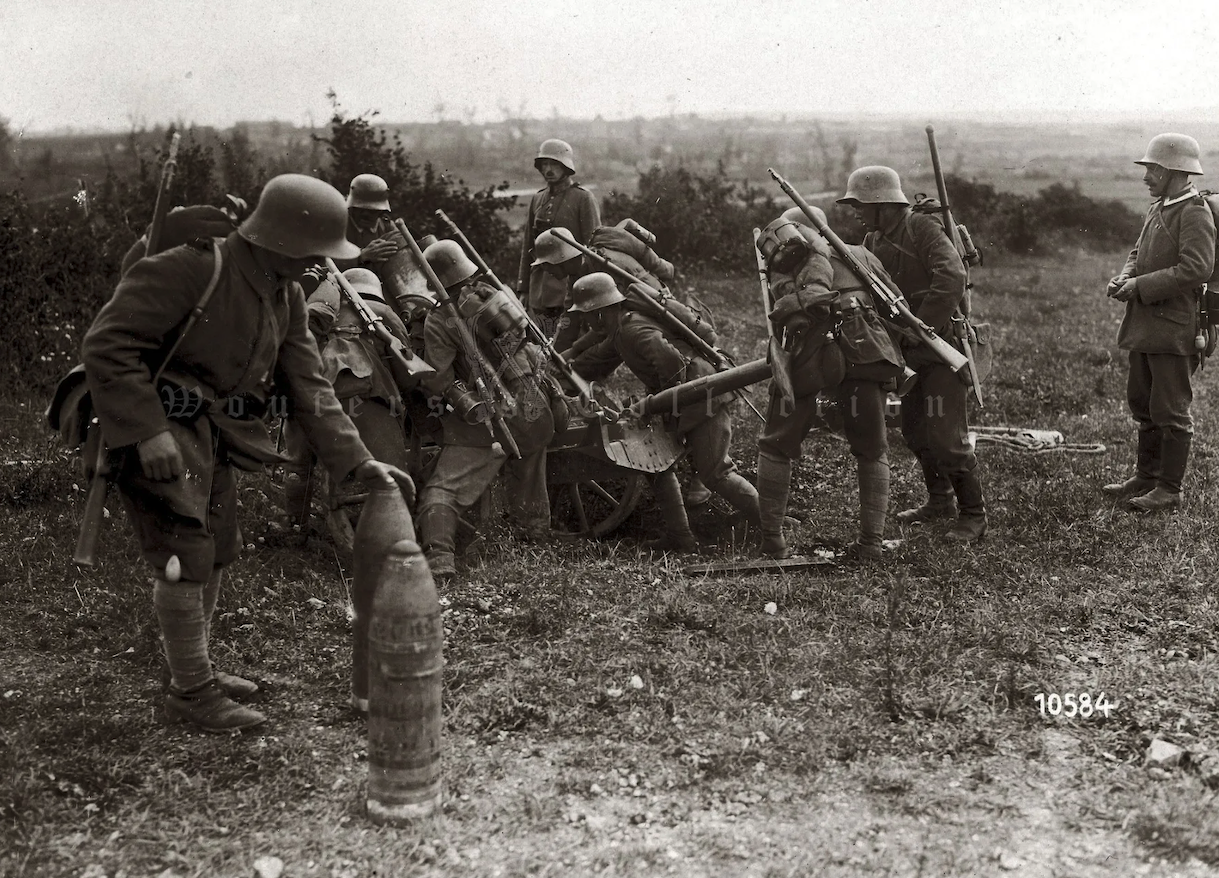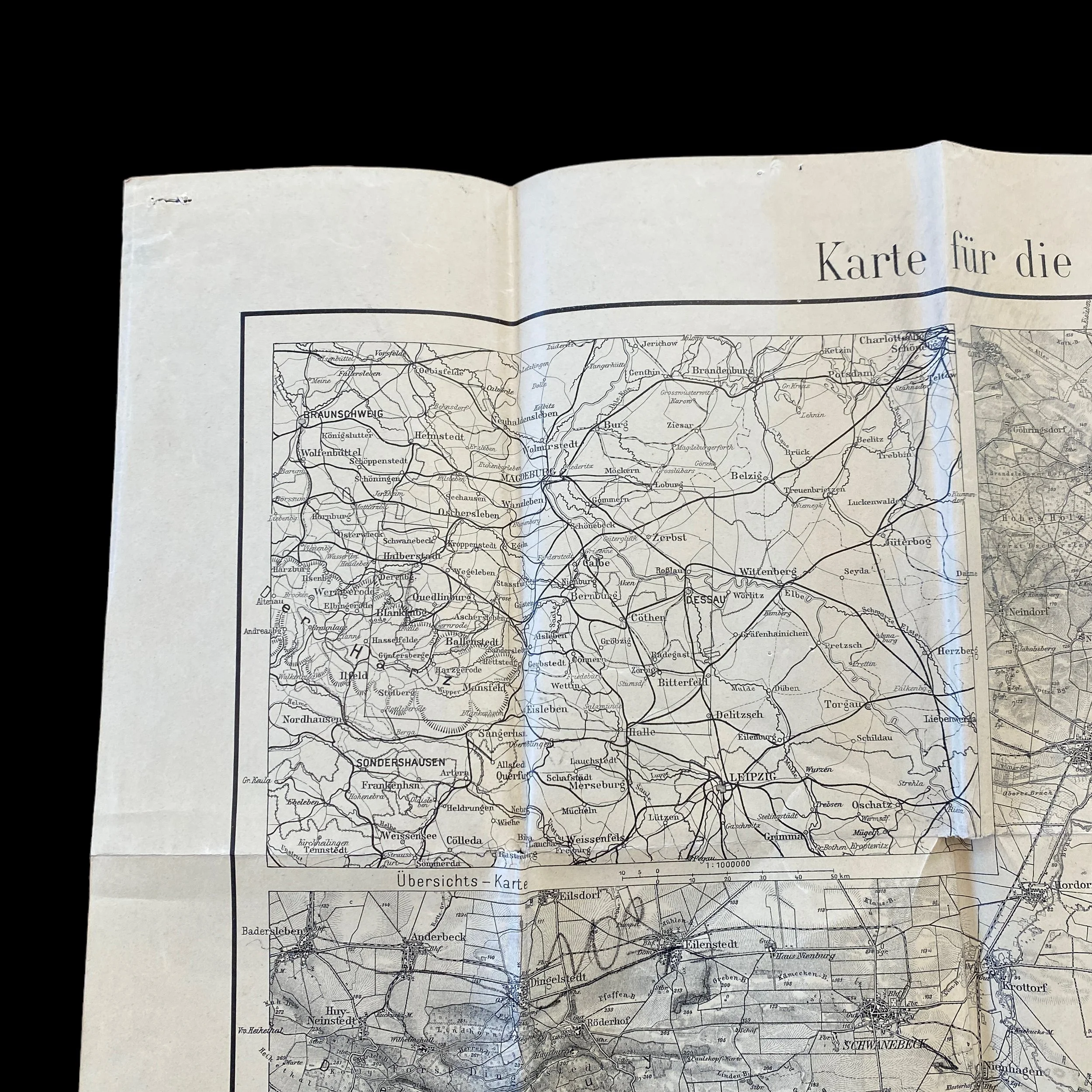RARE! WWI 1914 German IV Army Corps Brigade and Division Maneuvers Map 13th Field Artillery A.E.F. Captured






































RARE! WWI 1914 German IV Army Corps Brigade and Division Maneuvers Map 13th Field Artillery A.E.F. Captured
Comes with C.O.A.
*This World War I map is a bring back from Sgt. Judson O. who served with “Battery B” of the 13th Field Artillery American Expeditionary Force during WWI
This extremely rare and museum grade, World War I German map is titled “Map for the Brigade and Division Maneuvers of the IV Army Corps 1914”. On mobilization on August 2nd, 1914 the Corps was restructured. 8th Cavalry Brigade was withdrawn to form part of the 2nd Cavalry Division and the 7th Cavalry Brigade was broken up: the 10th Hussar Regiment was raised to a strength of 6 squadrons before being split into two half-regiments of 3 squadrons each and the half-regiments were assigned as divisional cavalry to 7th and 8th Divisions; the 16th Uhlan Regiment was likewise assigned as two half-regiments to 13th and 14th Divisions of VII Corps. Divisions received engineer companies and other support units from the Corps headquarters.
The IV Corps mobilized with 25 infantry battalions, 9 machine gun companies (54 machine guns), 6 cavalry squadrons, 24 field artillery batteries (144 guns), 4 heavy artillery batteries (16 guns), 3 pioneer companies and an aviation detachment.
This heavily marked German IV Army Corps map was used as the IV Army Corps supported the right wing of the forces that invaded France and Belgium as part of the Schlieffen Plan offensive in August 1914.
From 24 July 1916 to 19 December 1917, the Corps was known as Karpathenkorps (Carpathian Corps). The Corps was still in existence at the end of the war as part of the 2nd Army, Heeresgruppe Kronprinz Rupprecht on the Western Front.
The Schlieffen Plan: A Strategic Gamble in August 1914
The Schlieffen Plan, crafted by German military strategist Count Alfred von Schlieffen in the early 20th century, stands as one of the most ambitious and ultimately flawed military strategies in modern history. Designed to quickly eliminate the threat of a two-front war against France and Russia, the plan was implemented by Germany at the outset of World War I in August 1914.
The genesis of the Schlieffen Plan can be traced back to the geopolitical landscape of Europe at the turn of the 20th century. Germany, under the leadership of Kaiser Wilhelm II, found itself encircled by potentially hostile powers, particularly France to the west and Russia to the east. German military strategists, notably Count Alfred von Schlieffen, recognized the strategic imperative of avoiding a two-front war. The idea was to quickly defeat one of the adversaries before turning attention to the other.
The primary objective of the Schlieffen Plan was the rapid defeat of France within a matter of weeks. This required a lightning-fast, sweeping movement of German forces through Belgium and into northern France. The plan operated on several key assumptions, the most critical being the belief that Russia would take a considerable amount of time to mobilize its forces due to its vast size and logistical challenges. This assumption was a gamble that influenced the timetable and allocation of German troops.
In August 1914, as tensions in Europe escalated into open conflict with the assassination of Archduke Franz Ferdinand, Germany initiated the Schlieffen Plan. The German army, under the command of Helmuth von Moltke the Younger, crossed into Belgium in violation of its neutrality and swiftly advanced towards Paris. The German forces aimed to encircle and crush the French army in a decisive blow, thereby knocking France out of the war.
However, the Schlieffen Plan faced significant challenges and unexpected deviations. The Belgian resistance, though valiant, slowed the German advance, buying precious time for the Allies. Additionally, logistical and communication issues hindered the German forces, leading to a lack of coordination and slower progress than anticipated. As the German army approached Paris, they encountered stiff French resistance at the Battle of the Marne in September 1914, forcing a halt to their advance.
The failure of the Schlieffen Plan had profound consequences for the course of World War I. Instead of a swift victory, Germany found itself locked in a protracted and brutal conflict on both the Western and Eastern Fronts. The inability to achieve a quick victory on the Western Front resulted in a prolonged trench warfare stalemate, marking the beginning of a brutal and costly war of attrition.
Furthermore, the failure of the Schlieffen Plan had strategic implications for Germany's overall war effort. The shift to a two-front war strained German resources and manpower, ultimately contributing to the erosion of its military and economic strength over time.
The Schlieffen Plan, born out of strategic necessity and geopolitical imperatives, was a bold and risky endeavor that ultimately failed to achieve its intended objectives. The plan's shortcomings were not only rooted in military miscalculations but also in unforeseen circumstances and the resilience of the Allied forces. The consequences of this failure reverberated throughout World War I, shaping the trajectory of the conflict and underscoring the unpredictable nature of warfare. The Schlieffen Plan remains a case study in the complexities and challenges of military strategy, serving as a cautionary tale for future generations of military planners.